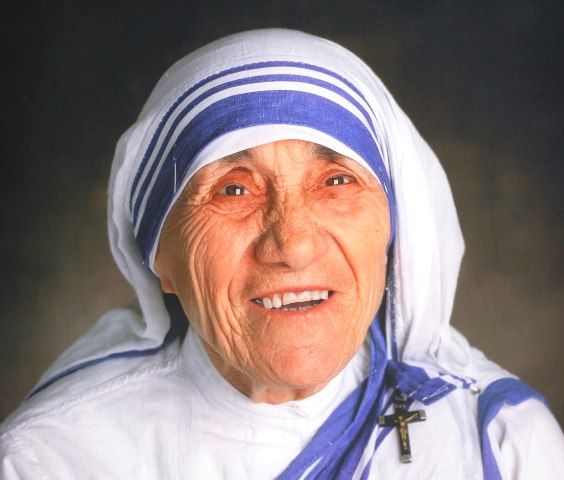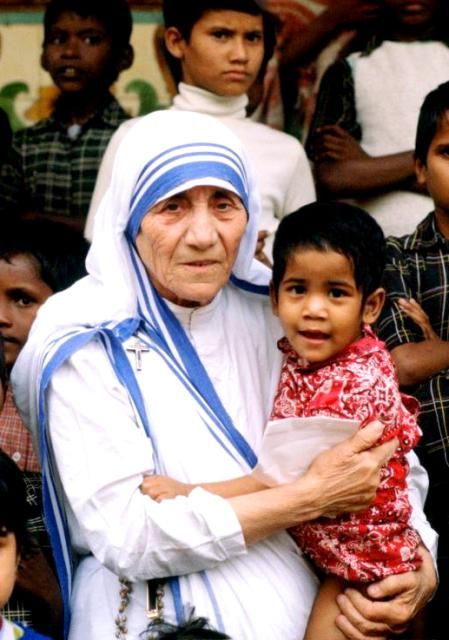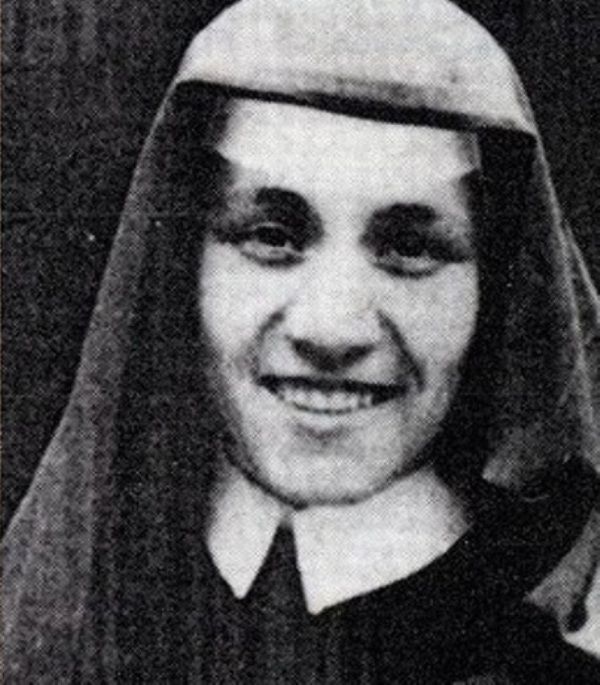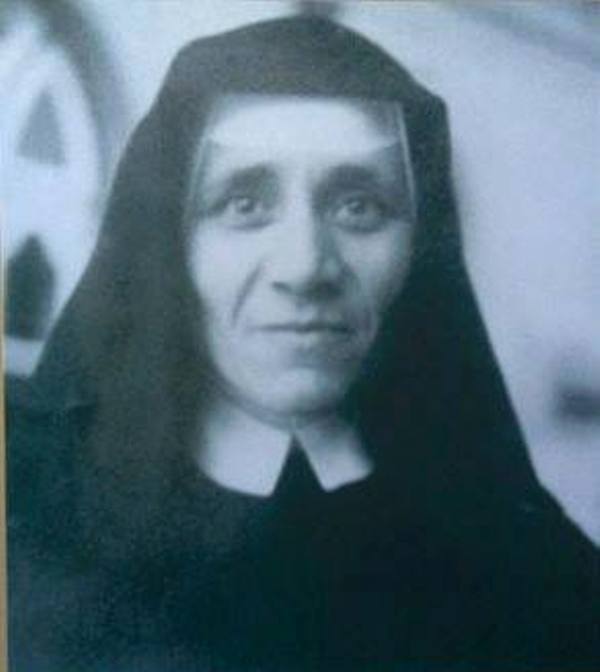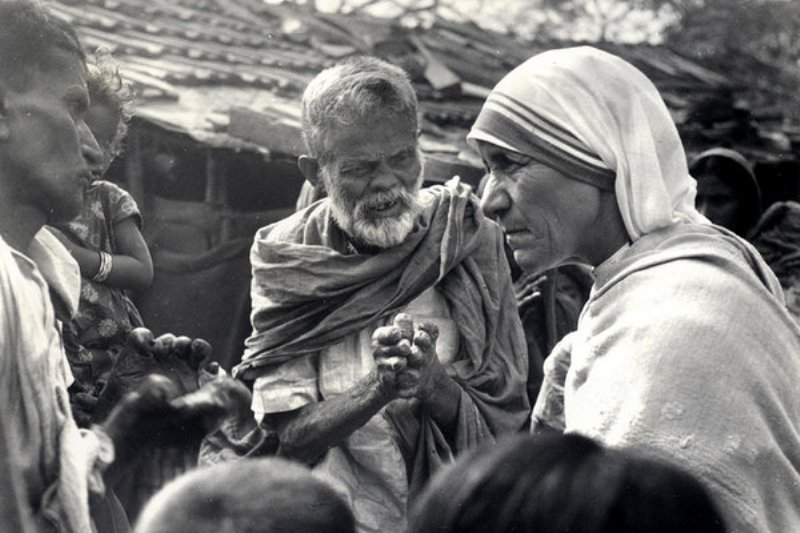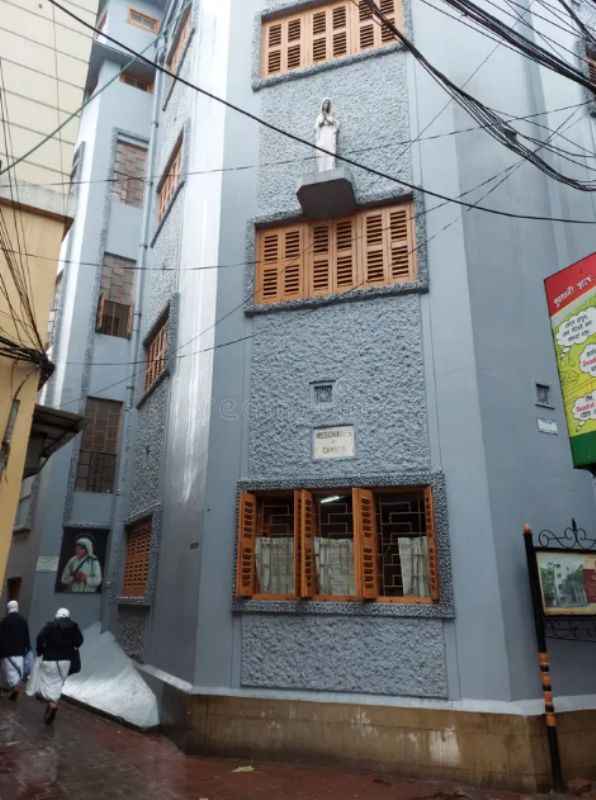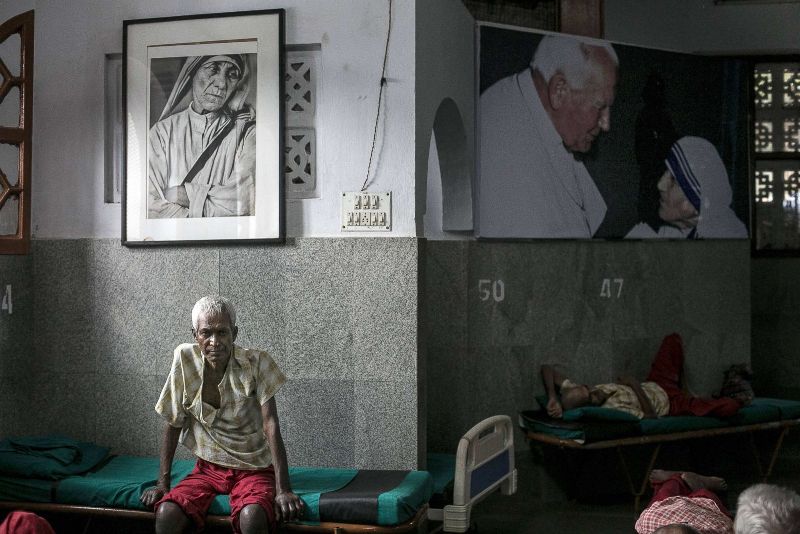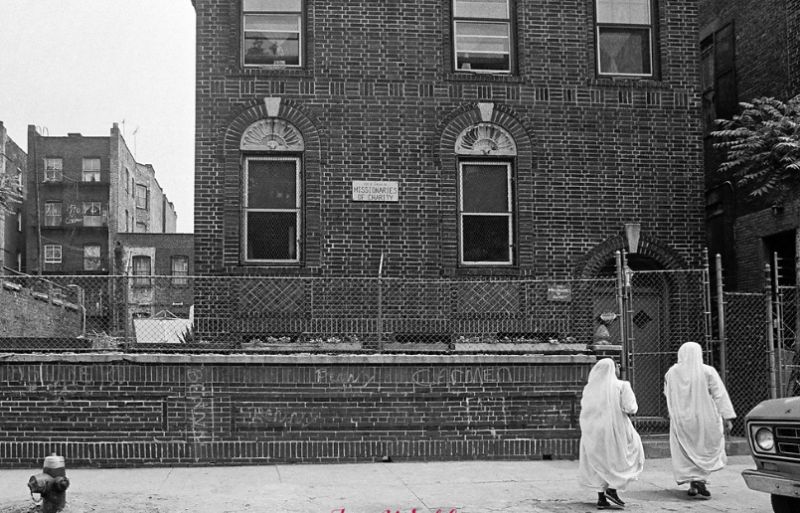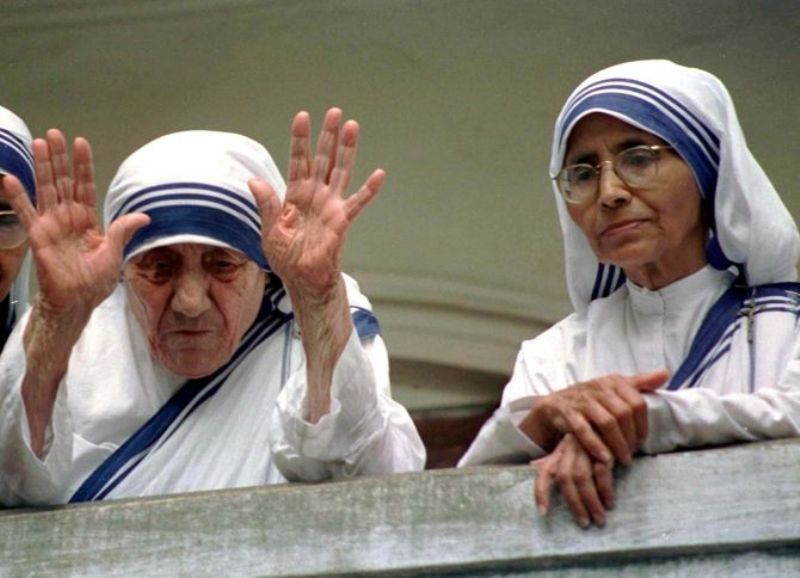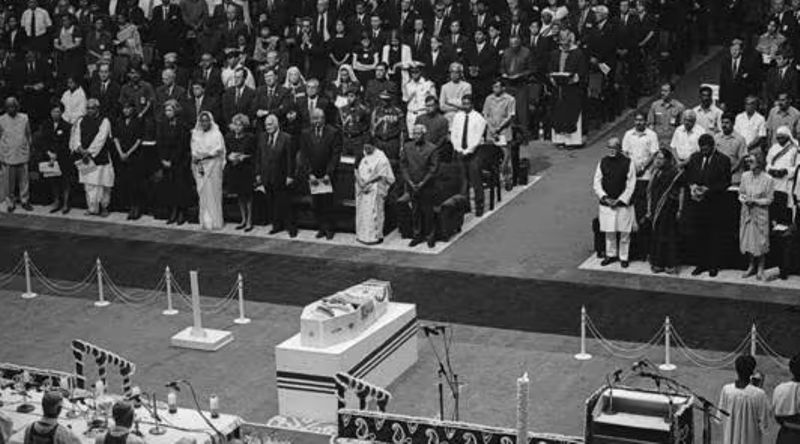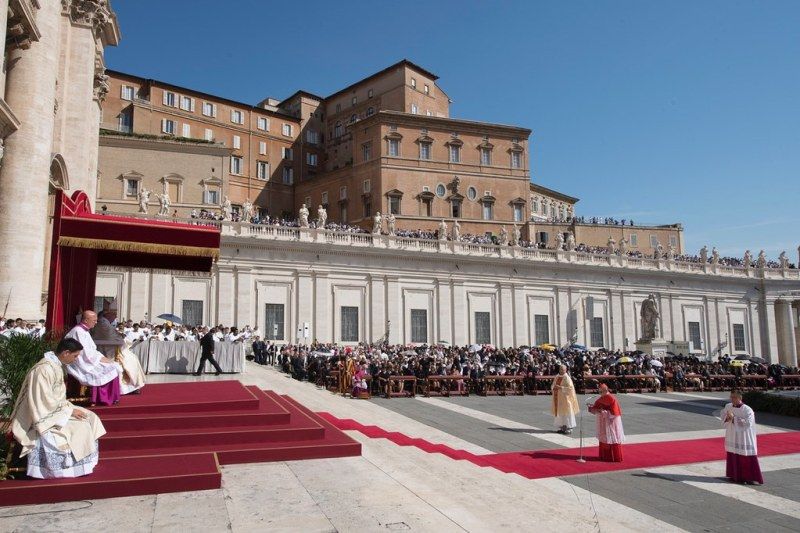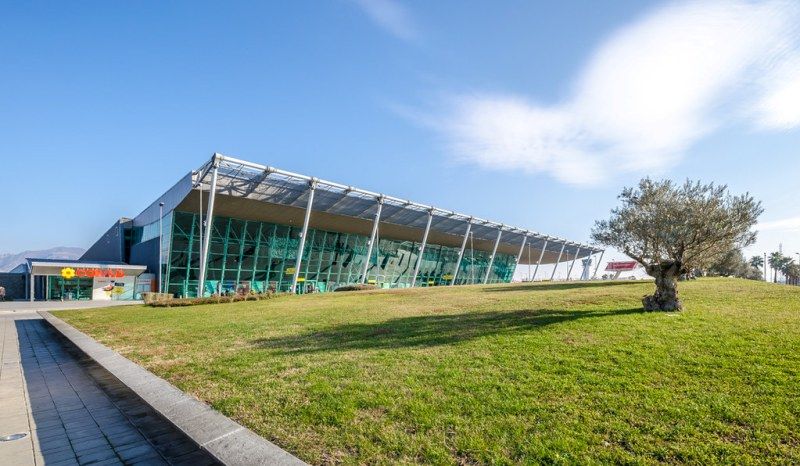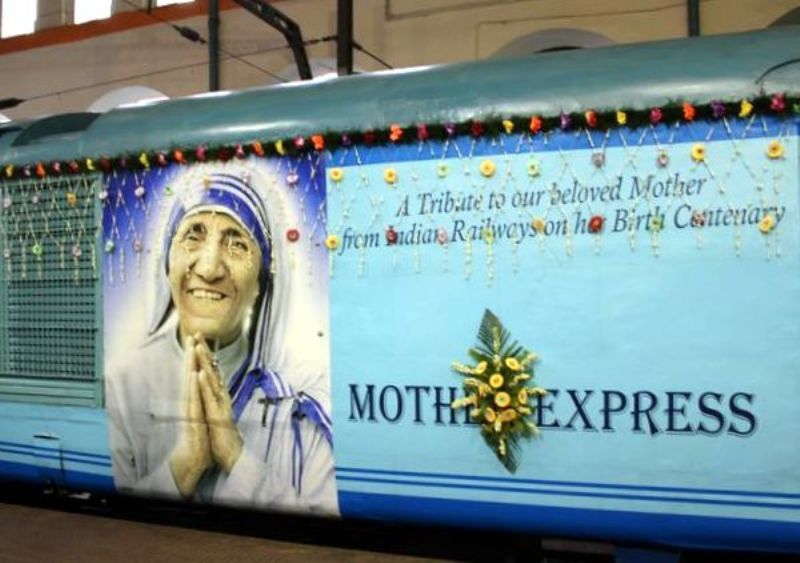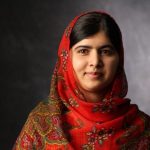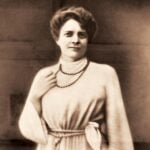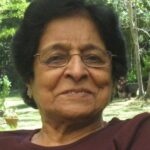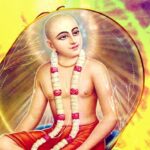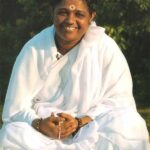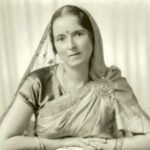Mother Teresa Age, Death, Family, Biography
Quick Info→
Death Date: 05/09/1997
Height: 5'
Age: 87 Years
| Bio/Wiki | |
|---|---|
| Birth Name | Anjezë Gonxhe Bojaxhiu |
| Real Name | Mary Teresa Bojaxhiu |
| Other Name | Blessed Teresa of Calcutta |
| Profession | Catholic Nun |
| Physical Stats & More | |
| Height (approx.) | 5' (152 cm) |
| Eye Colour | Grey |
| Catholic Nun | |
| Title(s) | • Virgin • Superior General |
| Venerated | Catholic Church |
| Beatified | 19 October 2003, Saint Peter's Square, Vatican City by Pope John Paul II |
| Colonized | 4 September 2016, Saint Peter's Square, Vatican City by Pope Francis |
| Associated With | • Missionaries of Charity (1950–1997) • Sisters of Loreto (1928–1948) |
| Major Shrine | Mother House of the Missionaries of Charity, Calcutta, West Bengal, India |
| Feast | 5 September |
| Successor | Sr. Nirmala Joshi, MC |
| Awards, Honours | 1997 • United States Congressional Gold Medal 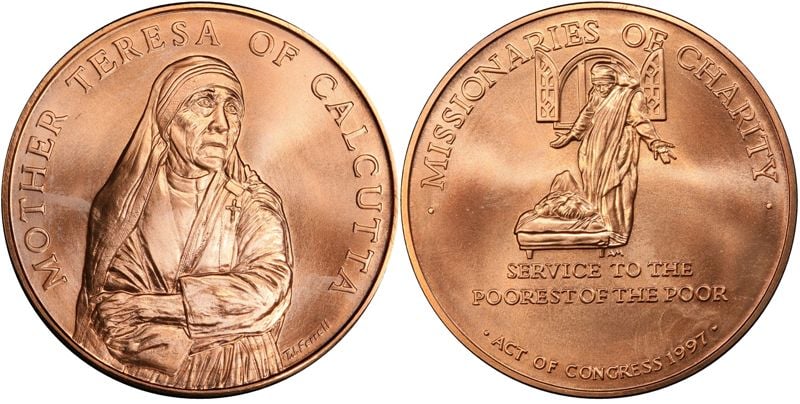 1996 • Honorary citizen of the USA 1985 • US President Ronald Reagan presented her with the Presidential Medal of Freedom 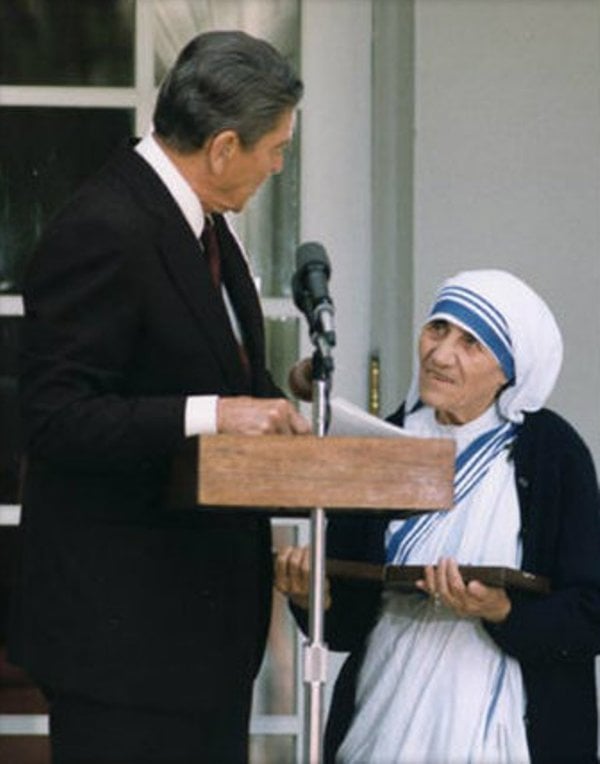 1983 • Queen Elizabeth II presented her with the Order of Merit 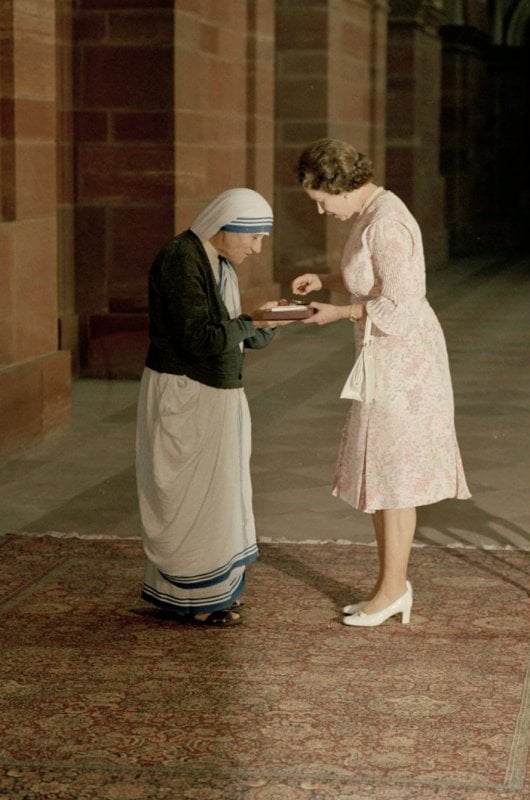 1980 • Presented with the Medal of Merits of the town of Skopje • Bharat Ratna, from the President of India 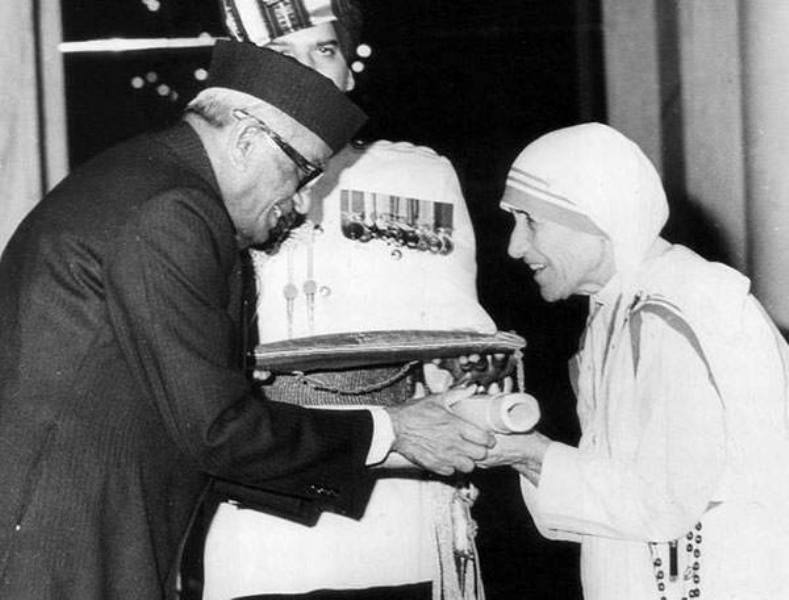 1979 • Nobel Peace Prize 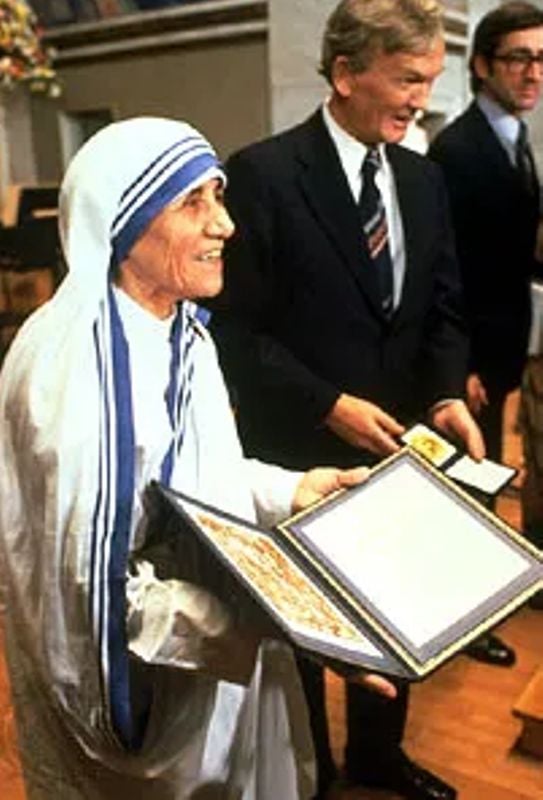 1978 • Award from the Balzan Foundation for humanity and peace among peoples 1977 • Honorary PhD in Theology, University of Cambridge, England 1975 • Featured on the cover of TIME magazine - The magazine called her one of the world’s “living saints.” 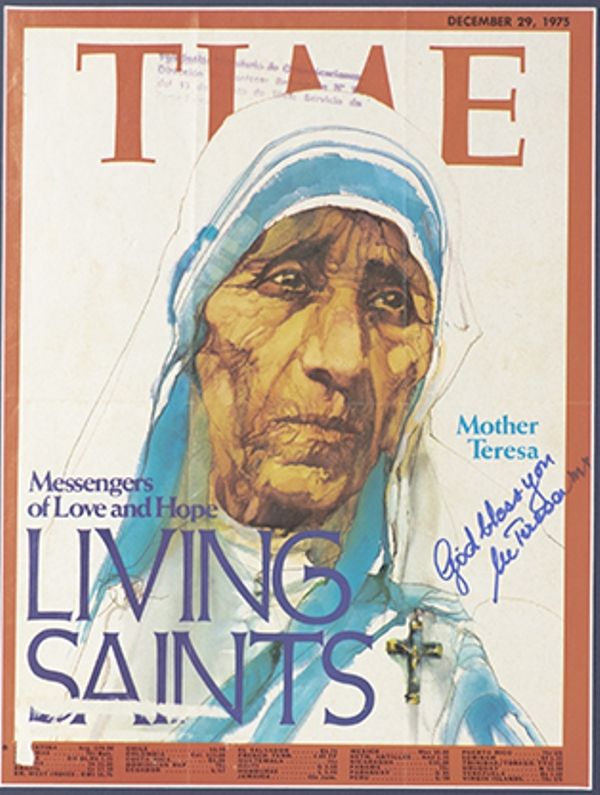 1973 • Templeton Prize for her extraordinary efforts to help the homeless and neglected children of Calcutta 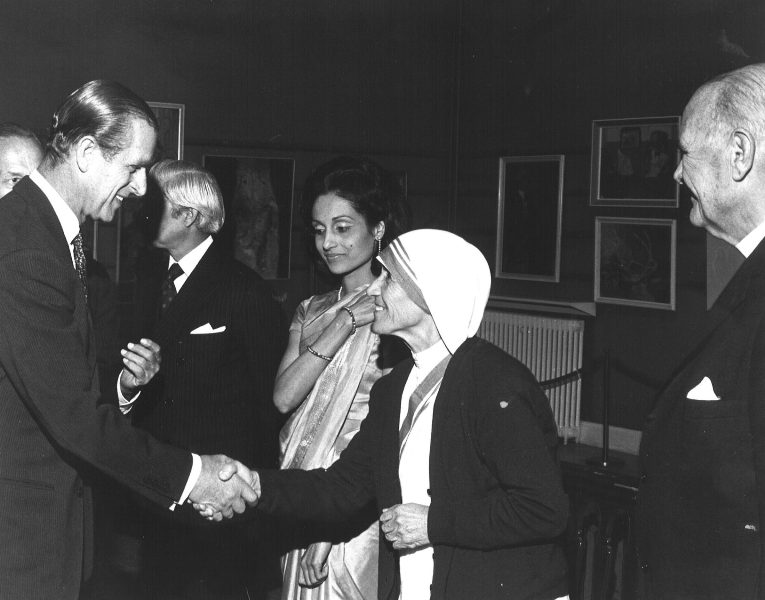 1971 • John f. Kennedy International Award • Pope Paul VI presented her with the Pope John XXIII Peace Prize 1969 • Jawaharlal Nehru Award 1962 • Ramon Magsaysay Award, in the Philippines • Padma Shri Award, from the President of India |
| Personal Life | |
| Date of Birth | 26 August 1910 (Friday) |
| Birthplace | Üsküp, Kosovo Vilayet, Ottoman Empire (modern Skopje, Republic of Macedonia) |
| Date of Death | 5 September 1997 |
| Place of Death | Calcutta (now Kolkata), West Bengal, India |
| Age (at the time of death) | 87 Years |
| Death Cause | Cardia Arrest - Prolonged illness including heart issues, pneumonia, and malaria |
| Zodiac sign | Virgo |
| Signature | 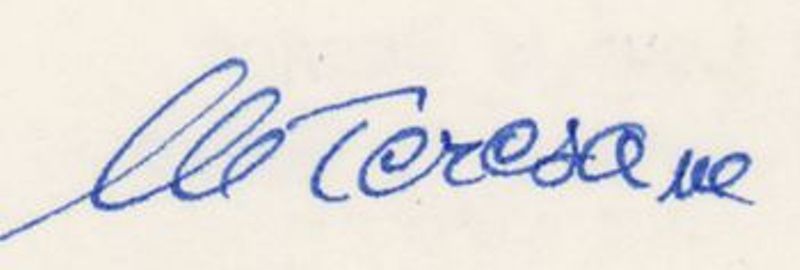 |
| Nationality | • Indian citizen (1950–1997) • Indian subject (1948–1950) • Yugoslavian citizen (1943–1948) • Yugoslavian subject (1918–1943) • Bulgarian subject (1915–1918) • Serbian subject (1912–1915) • Ottoman subject (1910–1912) • Honorary American citizenship (awarded 1996) |
| Hometown | Skopje, Macedonia |
| School | Attended a government school |
| Educational Qualification | Learned English at Loreto Abbey in Rathfarnham, Ireland |
| Religion | Christianity (Catholicism) |
| Ethnicity | Albanian |
| Food Habit | Non-Vegetarian [1]The Free Press Journal |
| Tomb | Located on the ground floor of the main building of the Mother House at 54A, A.J.C. Bose Road, Kolkata India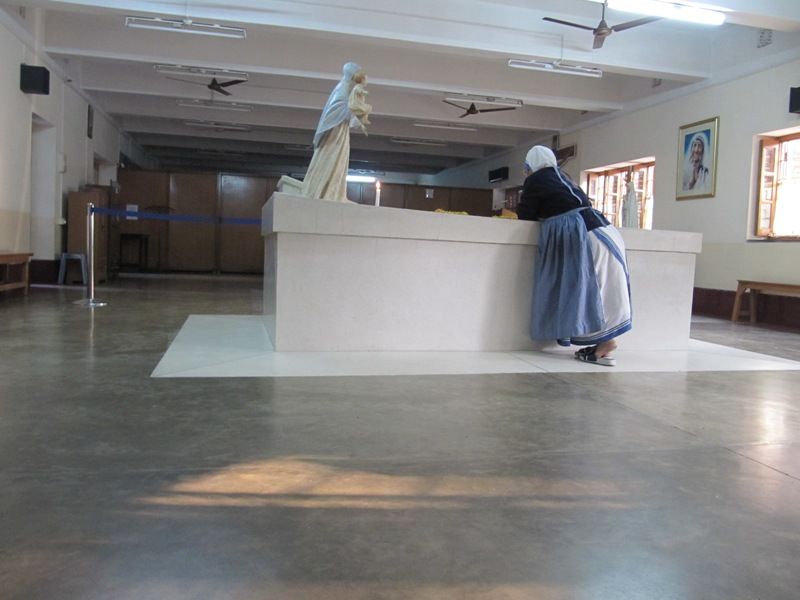 |
| Controversies | • She covered up the worst excesses of church A three-part Sky documentary series titled 'Mother Teresa: For the Love of God' claimed that Mother Teresa covered up for the Catholic church's greatest excesses, and she was more drawn to poverty and suffering than to genuinely helping people escape it. The makers of the documentary interviewed some of her closest friends. [2]WION • Accused of religious conversions In February 2015, RSS chief Mohan Bhagwat accused Mother Teresa of religious conversions. He said that in the name of service, her main motive was to covert people of other religions, especially Hinduism, to Christianity. [3]The Washington Post • Hell’s Angel - A critical documentary on Mother Teresa In 1994, Christopher Hitchens, a British write and an atheist, and British Pakistani journalist Tariq Ali heavily criticized Mother Teresa through their documentary titled "Hell’s Angel." The documentary was majorly based on the account of Aroup Chatterjee, an Indian-born British writer who had worked briefly in one of Teresa’s charitable homes. In the documentary, the facilities of her Missionaries of Charity in Kolkata were compared to Nazi Germany’s Bergen-Belsen concentration camp. While criticising her work, Hitchens called it the “cult of death and suffering.” The documentary also accused her of her relationships with controversial figures all around the world, including Haitian dictator Jean-Claude Duvalier and scandal-hit American financier Charles Keating. Hitchens later continued criticising Mother Teresa and her worth through a pamphlet titled “The Missionary Position." [4]The Washington Post • Criticised by British medical journal the Lancet In 1994, British medical journal the Lancet wrote a critical account of the care in Teresa’s facilities. • An academic Canadian study found fault in her method In the 1990s, an academic Canadian study found fault with her way of caring for the sick. The study also questioned her political contacts, management of the enormous sums of money she received, and views regarding abortion, contraception, and divorce. [5]The Washington Post • Secretly baptized dying people Many accounts have accused Teresa's nun of baptizing the dying people. [6]The Washington Post • Supported the Emergency imposed by Indira Gandhi When Indira Gandhi suspended civil liberties in 1975, she was criticized for supporting the emergency. She said, "People are happier. There are more jobs. There are no strikes." [7]Deccan Herald |
| Relationships & More | |
| Marital Status (at the time of death) | Unmarried |
| Family | |
| Parents | Father- Nikollë Bojaxhiu (Albanian businessman, benefactor, and politician) Mother- Dranafile Bojaxhiu 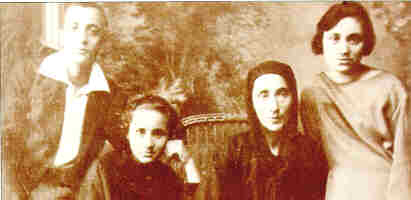 |
| Siblings | Brother- Lazar Bojaxhiu (elder) Sister- Aga Bojaxhiu (elder) |
Some Lesser Known Facts About Mother Teresa
- Mother Teresa once described herself and said,
By blood, I am Albanian. By citizenship, an Indian. By faith, I am a Catholic nun. As to my calling, I belong to the world. As to my heart, I belong entirely to the Heart of Jesus.”
- She grew up in an Albanian family in Skopje (now Macedonia); she was the youngest of three children of her parents.
- Although she was born on 26 August 1910, she considered 27 August her true birthday as she was baptized that day.
- While growing up in Skopje, she attended a government school and became a member of a sodality, a Roman Catholic lay woman’s society.
- Her father died when she was 8 years old.
- The sodality introduced her to the Irish Sisters of Loreto, who had missions in Bengal.
- According to Mother Teresa, she wanted to become a nun since she was 12 years old.
- In 1928, she went to Dublin, where she studied English. In the same year, she was sent to the eastern Indian hill station at Darjeeling
- After arriving in Darjeeling, where the Loreto Sisters had a school for the daughters of tea planters and Westernized Indians, she began her novitiate.
- After spending a year in Darjeeling, she was sent to Calcutta (now Kolkata), where she started teaching at St. Mary’s High School.
- On 24 May 1931, she took her first vows as a nun and received a new name, Teresa.
- According to some Catholic priests and her own sisters, she chose her name after St. Teresa of Avila, the 16th‐century Spanish mystic who established an order of barefoot nuns and helped establish an organization of friars; however, she actually chose her name after Teresa de Lisieux (the “little Teresa”), a French nun of the late 19th century.
- Teresa de Lisieux was canonized in 1925, just three years before Mother Teresa became a sister of Loreto.
- In 1937, she became known as Mother Teresa after she took her final vows.
- Between 1931 and 1948, she taught geography, history, and catechism at St. Mary’s High School. She learned Bengali during this period and became the school’s principal.
- She witnessed the 1943 famine in Bengal during which she saw the increased suffering of people in the slums.
- She later left the school. In an interview, she described leaving the school harder than leaving home and said that she left the school because there was “a call within a call” that the 36-year-old Teresa heard while onboard a train on 10 September 1946. She once described the moment to the Rev. Edward Le Joly, one of the spiritual directors of her order, and said,
The message was quite clear. I was to leave the convent and help the poor whilst living among them. It was an order. I knew where I belonged, but I did not know how to get there.”
- Permission to leave an order is granted only by the Vatican, so she made an application to Calcutta’s archbishop.
- On 12 April 1948, the Vatican granted permission to her application.
- On 16 August 1948, she left the convent of Loreto for the streets and slums of Calcutta.
- On 21 December 1948, she made her first visit to a slum, where she looked after an old man lying sick on the road, washed the sores of some children, and cared for a woman dying of hunger and TB.
- In 1950, she founded her own order, the Missionaries of Charity, after receiving permission from the Holy See and made Calcutta her new home, where she started wearing the traditional Indian sari – a white sari with a blue border and a cross worn on the shoulder.
- Before starting her mission in Calcutta, Mother Teresa had visited Calcutta’s slums with some of her St. Mary’s High School girls and spent three months with American nuns in Patna, on the bank of the Ganges, learning rudimentary medical skills.
- Subhashini Das, a 19-year-old student from the Loreto school, was the first person to join Sister Teresa in her mission. Das later became Sister Agnes.
- On 7 October 1950, Mother Teresa became a citizen of India after a new congregation of the Missionaries of Charity was formally approved and instituted in Calcutta.
- To help the poor, Mother Teresa and her team established various facilities including an open-air school, housing for orphan children (Shishu Bhavan), nursing homes for lepers, and hospices for terminally ill patients (Nirmal Hriday).
- Her daily routine in Calcutta (now Kolkata) included waking up at 4:30 in the morning, praying, singing the Mass with her sister nuns, joining them for a spare meal of an egg, bread, banana, and tea, then going out into the city to work.
- In 1965, she received permission from Pope Paul VI to expand her order internationally; New York City became its first international centre in 1971.
- Apart from her work in India, she also provided philanthropic services to other countries including the rescue of 37 children who were trapped in a front-line hospital during the Seige of Beirut in 1982.
- She was fluent in five languages – Albanian, English, Bengali, Hindi, and Serbian.
- When she left her home at the age of 18, she never again saw her family members in her life.
- In 1989, she suffered a heart attack following which she decided to resign as head of the Missionaries of Charity; however, she had to keep the post after a unanimous vote.
- In 1997, Sister Nirmala, an Indian-born nun, replaced Mother Teresa after Teresa permanently retired due to her worsening health.
- Just a few days after her 87th birthday, Mother Teresa died after a cardiac arrest on 5 September 1997. Her funeral was held in Calcutta (now Kolkata) on 13 September 1997.
- Following her death, Pope John Paul II announced the process of her canonization or becoming a saint.
- On 19 October 2003, Mother Teresa was beatified by Pope John Paul II after an Indian woman recovered from stomach cancer who credited Mother Teresa’s intercession for the recovery. The Vatican later recognized this as a miracle.
- After her beatification, Mother Teresa was known by Catholics as “Blessed.”
- In December 2015, Pope Francis recognized a second miracle after a Brazilian man claimed he had recovered from a life-threatening brain infection after his family prayed to Mother Teresa.
- On 4 September 2016, Mother Teresa became a saint after she was canonised by Pope Francis I. During the canonisation ceremony held in St. Peter’s Square in Vatican City, Pope Francis said,
She made her voice heard before the powers of this world, so that they might recognize their guilt for the crime of poverty they created.”
- On 6 September 2017, she became the second patron saint of the Calcutta Archdiocese. St. Francis Xavier became the first patron saint of Calcutta in 1986.
- At the time of her death, more than 4,000 sisters and 300 brothers were involved in 610 missions in 123 countries.
- Mother Teresa has been named the patroness of a number of churches.
- Many buildings, roads, museums, and complexes have been named after her.
- Her birthday, 5 September, is a public holiday in Albania.
- On 26 August 2010, Indian Railways commemorated her birth centenary by introducing a new train, “Mother Express,” named after her.
- On 5 September 2013, the United Nations General Assembly declared her birthday, 5 September, the International Day of Charity.
- The 1969 BBC documentary film Something Beautiful for God was based on Mother Teresa’s life. The documentary was later adapted into a book by Malcolm Muggeridge in 1972.
- Mother Teresa: No Greater Love (2022), an American documentary film was based on the life of Mother Teresa.
References/Sources:

